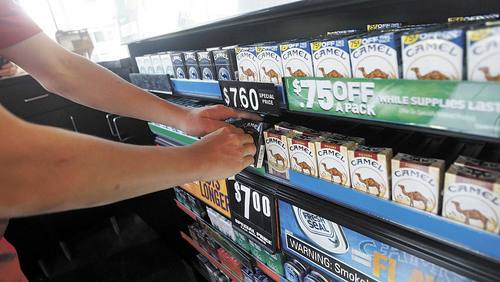New York Times: U.S. Smoking Rate Declines, but Poor Remain at Higher Risk
By SABRINA TAVERNISE
WASHINGTON — Smoking, the leading cause of preventable death in the United States, continued to decline last year, federal health authorities reported Thursday, with the share of American adults who smoke dropping to 16.8 percent, down from 17.8 percent in 2013.
Smoking has been one of the brightest public health successes of recent history. Nearly half of all Americans smoked in the 1960s, but a broad push against the habit, starting with the surgeon general’s warning in 1964, helped bring rates down. The rate has dropped by about a fifth since 2005, when it was 21 percent.
But the national numbers mask deep trouble spots within the American population. About 43 percent of less educated Americans smoked in 2014, compared with just 5 percent of those with a graduate degree. About a third of Americans insured by Medicaid, the health insurance program for the poor, smoked, compared with 13 percent of Americans with private insurance.
The figures, reported by the Centers for Disease Control and Prevention, underscored the extent to which smoking in America has become a problem of the poor. Nearly six million Americans covered by Medicaid smoke, as well as almost nine million uninsured Americans, or about a third of the uninsured population.
Smoking-related diseases accounted for more than 15 percent of annual Medicaid spending from 2006 to 2010, or about $39 billion a year, according to the American Lung Association.
“Disparities are the single most important issue in smoking,” said Kenneth E. Warner, a professor of public health at the University of Michigan School of Public Health.
Dr. Warner added: “The people who are politically influential believe the smoking problem has been solved. It’s not in their neighborhoods. Their friends don’t smoke. Those who still smoke are the poor, the disenfranchised, the mentally ill. That’s who we need to focus on.”
On Thursday, the federal government appeared to take aim at that problem by proposing a rule that would prohibit smoking in public housing nationwide.
Nationally, success of the antismoking campaign has been striking. Progress among the poor and less educated, however, has been far slower.
About 43 percent of people with only a high school equivalency diploma smoke, virtually unchanged from 2005. In comparison, smoking declined by about 26 percent among people with college degrees, to 8 percent from 11 percent. For people with a high school diploma only, smoking declined by about 12 percent, to 22 percent.
Smoking among people who live at or above the poverty line declined by about 26 percent, to 15 percent from about 21 percent in 2005. Those below the poverty line declined by about 12 percent, to 26 percent from 30 percent, the report found.
American Indians and Alaskan Natives had the highest smoking rate, about 29 percent, followed by Americans of more than one race, about 28 percent of whom smoked.
Whites and blacks smoked at about the same rate in 2014 — about 18 percent — while Hispanics had a much lower rate, 11 percent.
http://mobile.nytimes.com/2015/11/13/health/us-smoking-rate-cdc-report.html?_r=0



